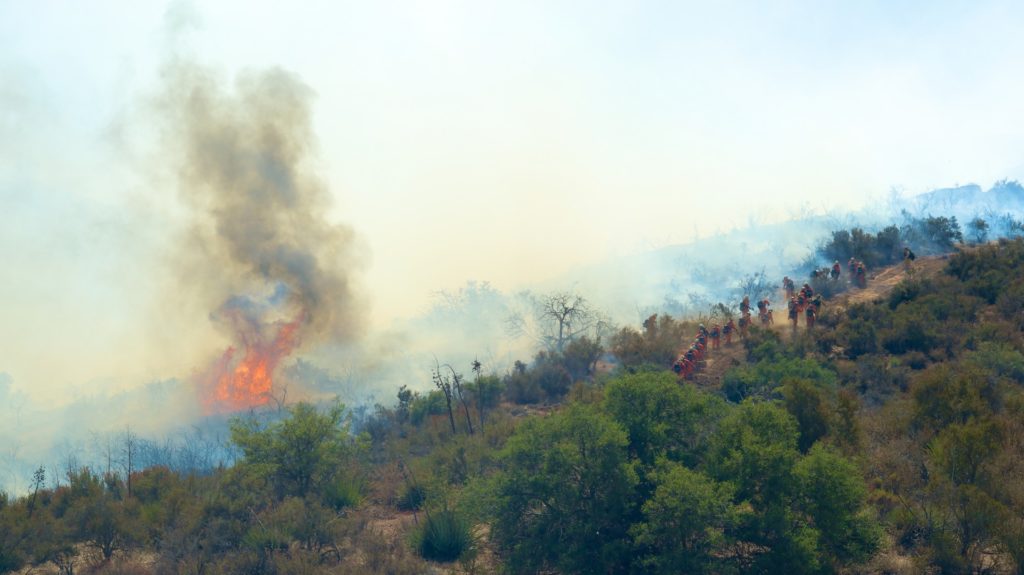
With fire season in full swing, California residents must be vigilant about maintaining fire-safe conditions on their properties.
After being hit particularly hard during the COVID-19 pandemic, California seems due for a summer reprieve. Unfortunately, this is unlikely to be the case. Not only are many areas of the state seeing a resurgence of novel Coronavirus cases, we now face another, more familiar yet equally concerning issue: wildfire season. Each summer, wildfires destroy thousands of acres and homes throughout California, and this year looks to be no exception. That’s why residents (particularly those situated in the wildland-urban interface) must be vigilant about maintaining fire-safe conditions on their properties. Consider the following advice for defending your home against wildfires.
Zone defense
The foundation of any fire-safe property is the creation of a “defensible space,” which fire authorities define as a 100-foot radial buffer surrounding the home. This area consists of two zones: the “defensible space zone,” which constitutes the home’s immediate 30-foot vicinity, and the “reduced fuel zone,” which extends the remaining 70 feet. In Zone 1, any and all potential combustion threats are to be removed, while in Zone 2, the landscape is to be maintained in such a way that minimizes the ability of fire to spread inward.
By the numbers
You don’t have to be a math whiz to create a defensible space, but you’ll at least need a tape measure. To provide a general guide for homeowners, fire authorities have prescribed set measurements pertaining to the heights and distances by which grass, shrubs, and tree limbs should be trimmed or pruned. For example, in Zone 1, a minimum distance of 10 feet between trees is recommended, as well as between tree limbs and the home’s perimeter. In Zone 2, there are recommended measurements for everything from the height of grass to both vertical and horizontal spaces between trees and shrubs. For more specifics on these dimensions, read CAL FIRE’s guide to creating a fire-safe defensible space.
Risk removal
If living plants, shrubs and trees are at risk for fire, dead growth is kindling just waiting to ignite. For this reason, all dead grass, leaves and pine needles should be completely cleared out of Zone 1 (including the yard, roof and rain gutters), and to a lesser extent in Zone 2. Additionally, any wood piles or similar combustible elements in Zone 1 should be relocated to Zone 2.
Prudent planting
While there’s no such thing as a “fireproof” plant, some are more fire-resistant than others, so keep this in mind when planting. Common fire-resistant characteristics include high moisture content in leaves, non-resinous leaves, open branching habits and slow rate of growth (which reduces maintenance). Some examples of fire-resistant varieties include plants like rockrose, ice plant and aloe; shrubs such as hedging roses, bush honeysuckles, currant and sumac; and trees such as maple, poplar and cherry. Don’t forget to use fire-resistant gardening materials as well, especially mulch, which can be quite flammable depending on what kind it is.
Defensive decor
Hardscaping can beautify a garden or landscape, but did you know it can also help protect against wildfires? By breaking up a property’s combustible elements, hardscape features like retaining walls, stone pathways and rock gardens can make it more difficult for fire to spread. Consider hiring a landscape designer to incorporate these elements on your property.
A recurrent responsibility
Creating a defensible space isn’t a one-time affair; rather, ongoing maintenance is required to sustain fire-safe conditions. In addition to clearing away dead growth and pruning shrubs and trees, be diligent about watering, as insufficient irrigation can compromise the integrity of fire-resistant plants. Remember, it’s your responsibility to keep your home and property as fire-safe as possible.
For more information on protecting your home and property against wildfires, check out our Fire Safety Resource Guide and visit CAL FIRE’s homepage.
